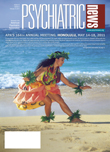Long before the first tourist arrived or the first hotel was built, there was a Waikiki—a swamp fed by waters of the Ko'olau Mountains, a center of Hawaiian hospitality, and the seat of Oahu's government.
The Waikiki Historic Trail is a walking path designed to remind locals and tourists alike of this past. The trail is some two miles long, including 21 points of interest along the beach and into the neighborhood streets of Waikiki; some of the points of interest are marked by bronze trail markers in the shape of surfboards with inscriptions describing the history of the site.
Other sites are "markers" themselves, such as the Moana and Royal Hawaiian hotels and the bronze statue of Duke Kahanamoku at Kuhio Beach Park.
Below is an abbreviated description and map of the trail, including only sites that are along the beach.
Location 1: Kapi'olani/Waikiki Beach
This section of Waikiki Beach contains four distinct areas: Outrigger Canoe Club, Sans Souci, Kapi'olani Park, and Queen's Surf. In ancient times, there were at least two temples, or heiau, located near the shore in this area. One was Kupalaha, at Queen's Surf Beach. It may have functioned in connection with the famed Papa'ena'ena heiau where it is believed the last human sacrifice was made by King Kamehameha I in Waikiki.
Location 2: Kapahulu Groin
Since ancient times Waikiki has been a popular surfing spot. Not far from here, on the slopes of Diamond Head, was a temple that was dedicated to surfing. Temple priests would announce surf conditions to the villagers below by flying a kite.
Location 3: Kuhio Beach
This stretch of beach from the Kapahulu Groin to the Beach Center is Kuhio Beach Park. It is named for Prince Jonah Kuhio Kalaniana'ole, Hawaii's second delegate to the U.S. Congress. He served as delegate from 1902 to 1922 and is best known for his involvement in the passage of the Homes Commission Act, which provided Native Hawaiians with 200,000 acres of land for homesteading.
Location 4: Kuhio Beach
Here stands a Waikiki landmark, the statue dedicated to Duke Paoa Kahanamoku. Duke, raised in Waikiki, symbolized Hawaii to millions of people. He was the world's faster swimmer, and between 1912 and 1932, he won three gold medals, two silver medals, and a bronze in four Olympics. He is known as the "Father of International Surfing."
Location 5: Kuhio Beach
According to Hawaiian legend, the Healing Stones of Kapaemahu were placed here in tribute to four soothsayers, Kapaemahu, Kahaloa, Kapuni, and Kinohi, who came from Tahiti to Hawaii long before the reign of Oahu's King Kakuhihewa in the 16th century.
Location 6: Courtyard, next to Banyan Tree, Moana Hotel Restaurant
The first hotels in Waikiki were bathhouses, such as the Long Branch Baths, which began to offer rooms for overnight stays in the 1880s. The Moana Hotel, the "First Lady of Waikiki," which opened on March 11, 1901, established Waikiki as a resort destination.
Location 7: Next to Patio, Duke's Restaurant
The Apuakehau (literally "basket of dew") stream emptied into the sea here. The Apuakehau flowed through the middle of Waikiki until the completion of the Ala Wai Canal in 1928. The mouth of this stream carved out a channel in the sea bottom, creating the surfing area known in ancient times as Kalehuawehe. Today this is a favorite spot for some of Waikiki's famed beach boys.
Location 8: Back Lawn, Royal Hawaiian Hotel
Here once stood the royal coconut grove known as Helumoa, which at one time consisted of nearly 10,000 trees. According to legend, the first tree was planted in the 16th century by the great chief Kakuhihewa. The Royal Hawaiian Hotel, or "Pink Palace," was completed in 1927 at the then astronomical cost of $5 million.
Location 9: Beach, Next to Outrigger Reef Hotel
One of Waikiki's places of healing was this stretch of beach fronting the Halekulani Hotel. The sick and the injured came to bathe in the kai, or waters of the sea. The natural sand-filled channel that runs through the reef makes it one of the best swimming areas along this stretch of ocean.
Location 10: Next to U.S. Army Museum
On this site stood the villa of Chun Afong, Hawaii's first Chinese millionaire, who arrived in Honolulu in 1849. By 1855, he had made his fortune in retailing, real estate, sugar, and rice, and for a long time held the government-monopoly opium license. He was the inspiration for Jack London's famous story "Chun Ah Chun." One of the last important military fortifications of its time, it was dedicated on December 7, 1976, as the home of the U.S. Army Museum of Hawai'i.
Location 11: Kalia Road
Had you walked across this road in 1897, you might have landed in Waikiki's largest fish pond, the Ka'ihikapu, which measured 13 acres. All of today's Fort DeRussy on the mauka (toward the mountain) side of the road was covered with fishponds. There were actually hundreds of fishponds in Waikiki. The Hale Koa Hotel is used exclusively for U.S. military personnel and their dependents.

